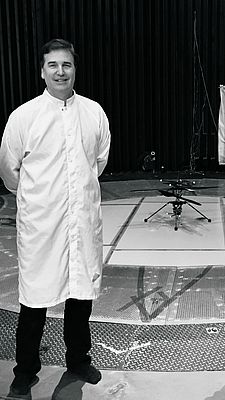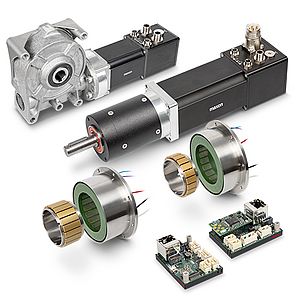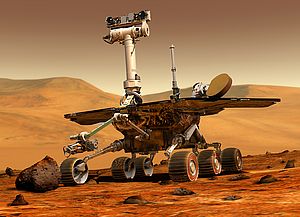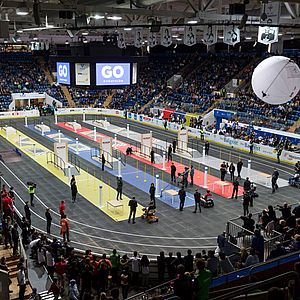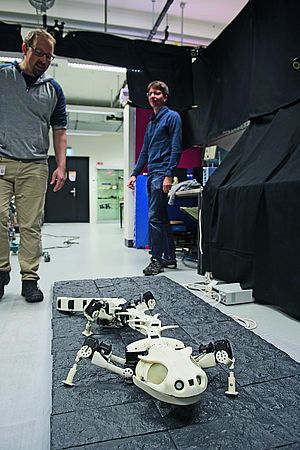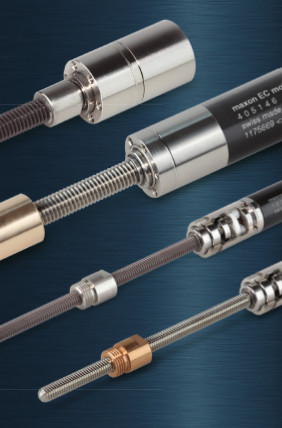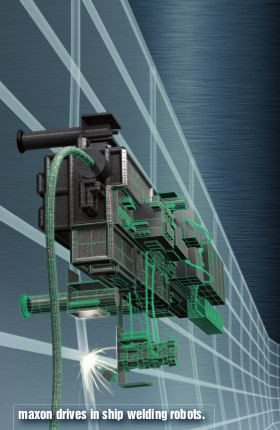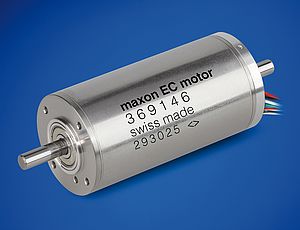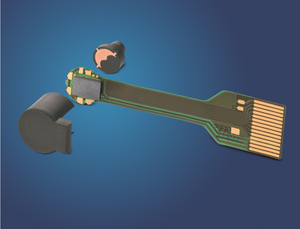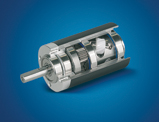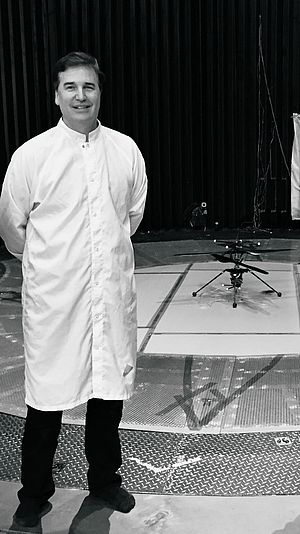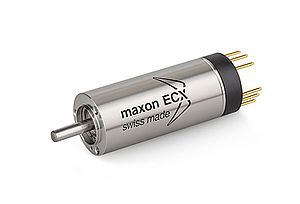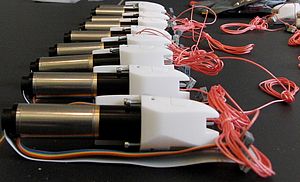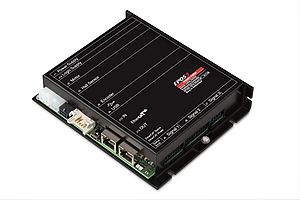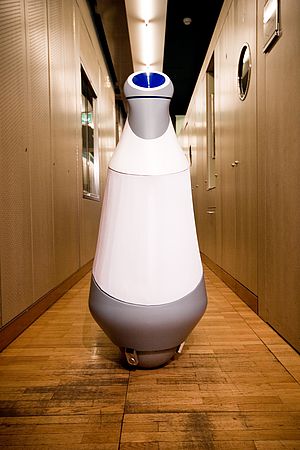For the first time in human history, a helicopter is going to be used on Mars. AeroVironment was involved in building the helicopter. Are you nervous?
Matt Keennon: Am I ever! There are so many unknowns, from the launch to the landing on Mars. Operating a helicopter in such a hostile environment is absolutely unprecedented. The entire team—JPL, NASA Ames, NASA Langley, and us here at AeroVironment—made a huge effort to work out all the risks and reduce them to a minimum.
How did you get the idea for a Mars helicopter?
The idea of having an aerial vehicle take off from the surface of Mars goes back several decades. In 1993, Romanian scientists published a study on a solar-powered vertical takeoff aircraft for Mars. In the late 1990s, NASA ran a competition for students in which the participants had to develop a concept for a Mars helicopter. The current Mars helicopter, Ingenuity, was the brainchild of Bob Balaram from JPL, who has been working with us for more than 20 years now. He is the head engineer on this project and has directed it right from the beginning.
What findings are scientists hoping to gain from the flights and the flight images?
Although each of the flights will be less than two minutes in duration, they will provide incredibly valuable data that will help us better understand the environment on Mars in a whole new way.
The air on Mars is extremely thin and is comparable with conditions on Earth at an altitude of 30 kilometers. In your estimation, how likely is it that the little drone will actually take off on the Red Planet?
I’m very confident that the helicopter will take off from the surface of Mars and will fly. AeroVironment has already constructed solar and battery-powered aircraft that have flown successfully at that altitude with that same low air density. Those aircraft flew with propellers that are very similar to the rotor blades on the Mars Ingenuity helicopter.
What was the biggest challenge for the engineers in this groundbreaking project?
If you ask the electrical engineers, they will say designing the electronics was the most difficult part. The mechanical engineers will say the mechanical design was the most difficult. The software engineers will say the software and so on, until we’ve gone through all the engineering disciplines. Every member of our development team—whether at JPL, maxon, or AeroVironment—has worked hard to make this historic undertaking a reality. Ultimately, nothing beats good teamwork.
How many people are involved and how long has this pioneering project been running?
Development began on this Mars helicopter innovation project in 2013. Over the course of time, there have probably been several hundred people working on it. Dozens of companies have also been involved. Like maxon, they had to develop custom-made components, tested to incredibly strict specifications. It wasn’t always easy to meet the requirements of the mission, but we got there.
Why maxon?
maxon has extremely valuable experience in the space sector, and also played an important part in the success of the Nano Hummingbird aircraft from AeroVironment in the early 2000s. That was the first hummingbird robot to use a maxon 8 mm brushed DC motor for its drive.
What requirements do the DC motors have to meet?
Aspects such as weight, length, operating voltage, efficiency at a specific torque and speed, service life under a specific load, storage temperature, operating temperature, and resistance to dust ingress, to name just a few.
How would you describe working with maxon?
Working with maxon was and is fantastic in every way. Through our intensive collaboration, we’ve been able to build up a huge body of knowledge. The little DC motors are the most difficult component in this project.
What direction could future Mars helicopters take?
There are a lot of ideas for future Mars helicopters, but none of them are definite yet. I’m sure the Mars helicopter Ingenuity will be an important first step toward a much larger and much more complex helicopter that will have capabilities that we can’t even imagine today.
Who? How? What? Facts & figures
Control The helicopter has autonomous control. There is no way to steer it remotely. The time delay involved in sending radio signals between the Earth and Mars makes that impossible.
Route planning For each flight, there will be a specific flight plan that will be programmed from Earth and loaded into the helicopter before it takes off. On the day of the flight, the helicopter will take off at the predetermined time and then make its own decisions for the precise, fast-calculated flight control commands needed to execute the overall flight plan and land safely.
Flight profile Take off, climb three meters, laterally yaw (rotate) to look around, and then slowly descend to land safely. A more advanced flight plan would include lateral translation of up to 150 meters over the Martian terrain, and then returning to the starting point before landing.
Analysis The plan is to use the two days following a flight to transmit the collected data, including the color photos taken, and to plan the next flight. The flight routes will become more complex from one flight to the next. There are 30 experimental windows in which the flights can be carried out. A total of five exploratory flights are planned.


